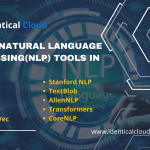Top Benefits of Using Google Bard AI
Top Benefits of Using Google Bard AI
In recent years, advancements in artificial intelligence (AI) have revolutionized various industries, including natural language processing and generation. One such breakthrough is Google’s BART (Bidirectional and AutoRegressive Transformers) AI model. BART has made significant contributions to language understanding, summarization, and text generation tasks. In this blog, we will explore the top benefits of using Google BART AI and how it can revolutionize the way we interact with language.
Improved Language Understanding
Google BART AI excels in understanding the intricacies of human language. By training on large amounts of text data, BART has developed a deep understanding of grammar, context, and meaning. This enables it to comprehend and interpret complex textual information accurately. Whether it’s analyzing user queries or understanding the nuances of written content, BART’s language understanding capabilities are invaluable.
Text Summarization
One of the key applications of Google BART AI is text summarization. BART can distill lengthy documents, articles, or reports into concise and coherent summaries. This saves time for users who need to quickly grasp the essence of a piece of text. Text summarization powered by BART enhances productivity, aids research, and improves information consumption in various domains such as journalism, academia, and business.
Content Generation
Google BART AI has the remarkable ability to generate high-quality, coherent text. This opens up possibilities for automated content creation in various contexts. From generating product descriptions and news articles to creating personalized emails and chatbot responses, BART can alleviate the burden of manual content generation and streamline the process.
Translation and Multilingual Applications
BART’s language understanding and generation capabilities extend to multilingual contexts. It can be trained on diverse language pairs and used for tasks like machine translation. BART’s multilingual abilities allow for seamless communication and enable businesses and individuals to bridge language barriers more effectively.
Conversational Agents and Chatbots
With its impressive language generation capabilities, Google BART AI can power conversational agents and chatbots. BART can generate responses that are contextually relevant, coherent, and human-like, making interactions with chatbots more natural and engaging. This enhances customer service, improves user experiences, and reduces the need for human intervention in routine inquiries.
Training and Fine-tuning Capabilities
Google BART AI provides a powerful platform for training and fine-tuning customized language models. Developers and researchers can leverage BART’s pre-trained weights and architectures to build specialized models for specific domains or tasks. This flexibility allows for tailor-made language models that align with specific requirements, providing enhanced performance and accuracy.
Research and Innovation
Google BART AI is an open-source model, encouraging research and innovation in the field of natural language processing. Researchers can explore BART’s architecture, experiment with fine-tuning techniques, and contribute to advancements in language understanding and generation. This collaborative approach fosters continuous improvement and paves the way for future breakthroughs in AI-driven language technologies.
Google BART AI represents a significant milestone in the field of natural language processing and generation. Its robust language understanding, text summarization, content generation, and multilingual capabilities unlock a myriad of possibilities across various industries. From improving communication and productivity to enhancing customer experiences, the benefits of using Google BART AI are vast. As AI continues to evolve, we can expect further advancements and applications of this powerful language model, shaping the way we interact with language in the digital age.









